The Mi 11 Ultra is Xiaomi’s brand-new and biggest flagship, boasting a 6.81-inch AMOLED quad-curved display, three full-sized rear cameras, and a small screen at the back. The phone belongs in DXOMARK’s ultra-premium category and benefits from Xiaomi’s collaboration with two major experts: Qualcomm for its top-of-the-line Snapdragon 888 chipset, and Harman Kardon for “superb sound quality.” Let’s put this last claim to the test.
Audio specifications include:
- Two speakers (top left and bottom right of the device)
- Audio developed in collaboration with Harman Kardon
- The Mi 11 Ultra can double as a microphone if there’s a Bluetooth speaker nearby
- No headphone jack
About DXOMARK Audio tests: For scoring and analysis in our smartphone audio reviews, DXOMARK engineers perform a variety of objective tests and undertake more than 20 hours of perceptual evaluation under controlled lab conditions. This article highlights the most important results of our testing. Note that we evaluate both Playback and Recording using only the device’s built-in hardware and default apps. (For more details about our Playback protocol, click here; for more details about our Recording protocol, click here.)
Test summary
Scoring
Sub-scores and attributes included in the calculations of the global score.
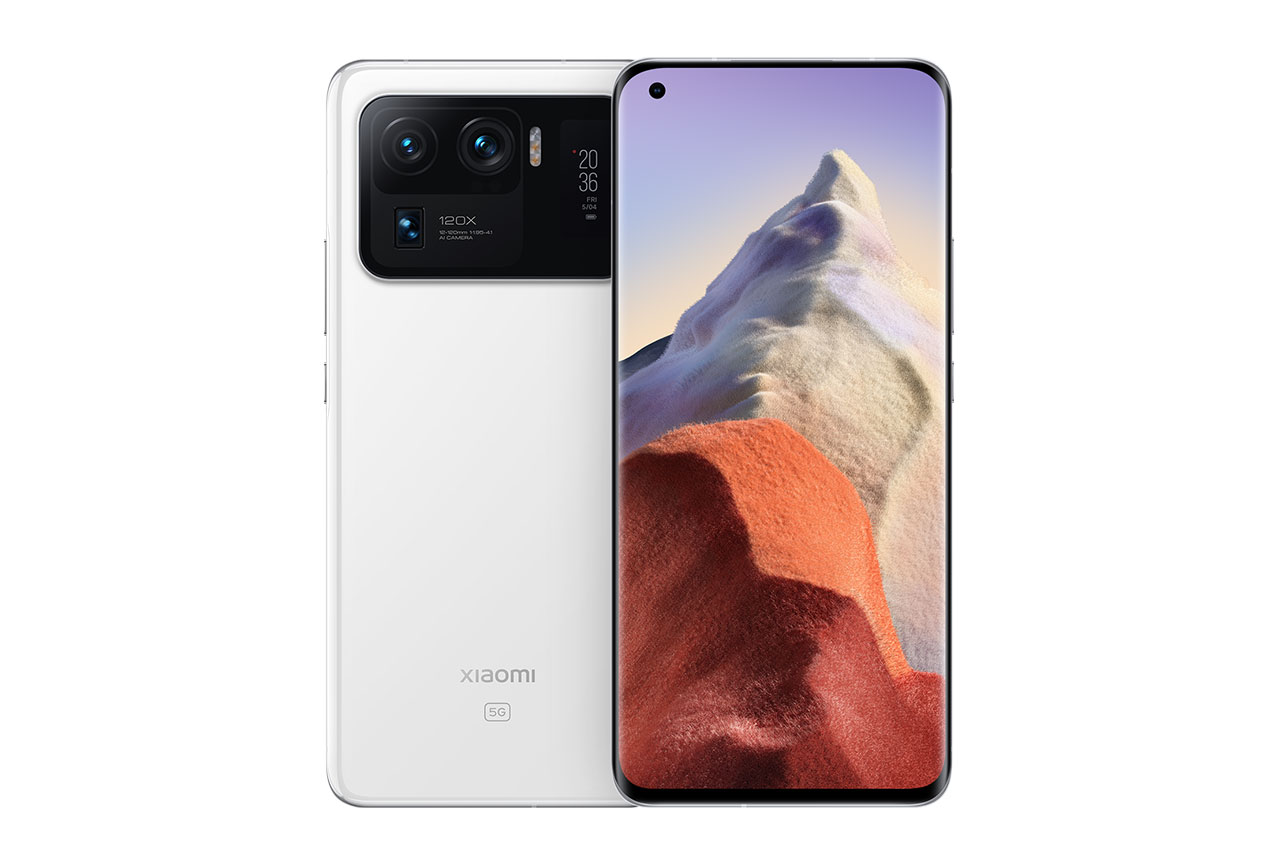
Xiaomi Mi 11 Ultra


 112th
112th 64th
64thPlayback
Pros
- Good user experience overall
- Good timbre performance overall, with a clean tonal balance despite a lack of low-end extension
- Good spatial attributes, with realistic wideness and good localizability
Cons
- Slight lack of low-end
- Maximum volume does help with bass presence, but can exhibit distortion, pumping, and aggressive voices.
- Minimum volume is not properly optimized (some contents might be difficult to hear).
Recording
Cons
- Limited wideness and localizability in selfie mode
- Recording loudness could be higher
While the Xiaomi Mi 11 Ultra’s Audio score of 71 certainly places it above the average audio performer in our database, it conceals average results in playback… and an outstanding performance as a recording device.
In Playback testing, the Mi 11 Ultra performs reasonably well, thanks to fairly clean tonal balance, realistic wideness, precise localizability, sharp attack, and satisfactory maximum volume. But those good attributes do not suffice to expiate the speakers’ faults, namely a slight lack of low-end, middling bass precision and punch, and several sonic issues arising at louder volumes — for example, aggressive voices, distortion, and pumping. Minimum volume isn’t sufficiently well tuned either, occasionally affecting intelligibility. All in all, while the phone certainly doesn’t fare poorly in this area, there are better options if what you’re looking for is a portable playback alternative.
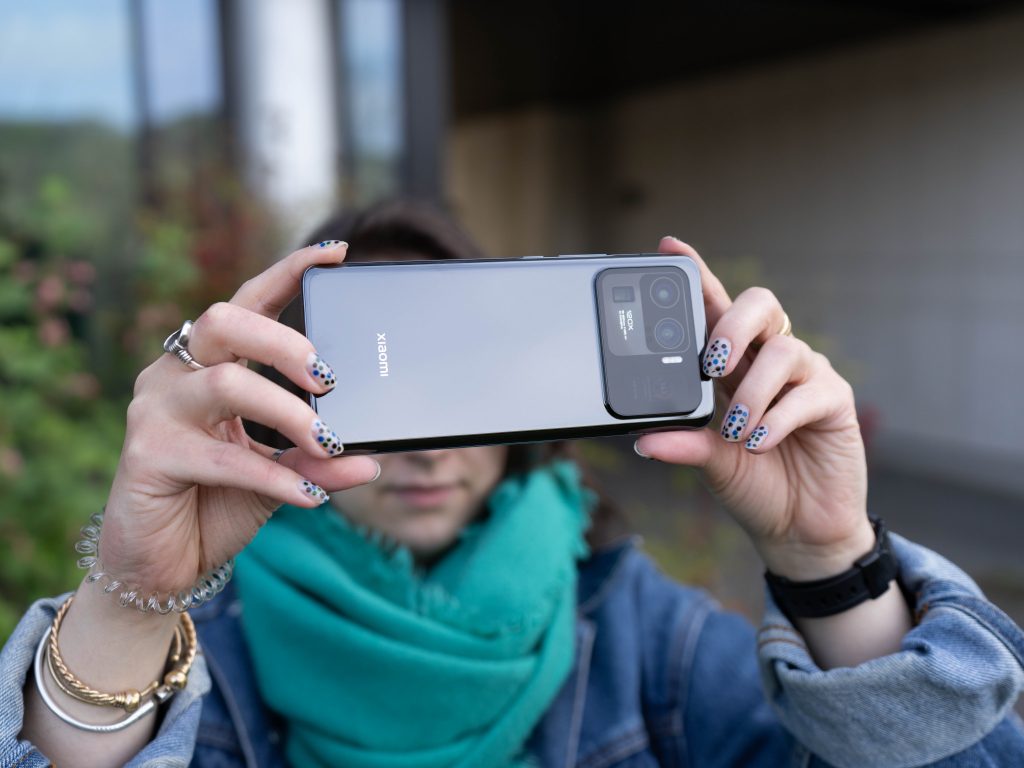
The phone’s excellent Recording score is anchored by outstanding timbre, dynamics, and spatial attributes, very good maximum loudness reachable (and that said, nominal loudness could be a tad higher), along with harmonious and natural background capture, and a true mastery at controlling sonic artifacts. In terms of use cases, the Xiaomi Mi 11 Ultra is very well suited for most of our tested scenarios (concerts, meeting room recordings, memos, and videos made with the rear cameras), with the exception of selfie videos, which could offer a wider sound field and more precise localizability for sound sources.
Sub-scores explained
The DXOMARK Audio overall score of 71 for the Xiaomi Mi 11 Ultra is derived from its Playback and Recording scores and their respective sub-scores. In this section, we’ll take a closer look at these audio quality sub-scores and explain what they mean for the user.
Playback

Timbre
Xiaomi Mi 11 Ultra
63
89
Timbre tests measure how well a phone reproduces sound across the audible tonal range and takes into account bass, midrange, treble, tonal balance, and volume dependency.
Overall, the Xiaomi Mi 11 Ultra does a fairly good job in the frequency domain, with clear high-end and natural midrange, giving it a Timbre sub-score of 63. No undesirable resonances are distinguishable.
Despite a generally harmonious tonal balance, the speakers’ lack of low-end makes playback sound a bit thin. Further, voices can occasionally seem too present, and even become aggressive at maximum volume. Except for classical music scoring a little higher than the rest, the speakers’ frequency response is similarly suited for all music genres and use cases (movies and games) tested.

Dynamics
Xiaomi Mi 11 Ultra
66
81
DXOMARK’s dynamics tests measure how well a device reproduces the energy level of a sound source, and how precisely it reproduces bass frequencies.
Audio played back by the Xiaomi Mi 11 Ultra exhibits satisfactory dynamics attributes, with fairly sharp attack at nominal volume, becoming even better at soft and maximum volumes. Slightly above-average bass precision and punch would have both been more impactful if it weren’t for the lack of low-end extension. As for the lower-frequency sound envelope, despite not being realistic enough at nominal volume, it gains accuracy as the volume increases.

Spatial
Xiaomi Mi 11 Ultra
60
88
The sub-attributes for perceptual spatial tests include localizability, balance, distance, and wideness.
Here too, the Mi 11 Ultra delivers a good enough performance. The field sounds realistically wide — that is, not too narrow, but not exaggeratedly large. The balance between left and right channels is accurate overall, although centered elements seem somewhat shifted to the right side of the device in landscape mode.
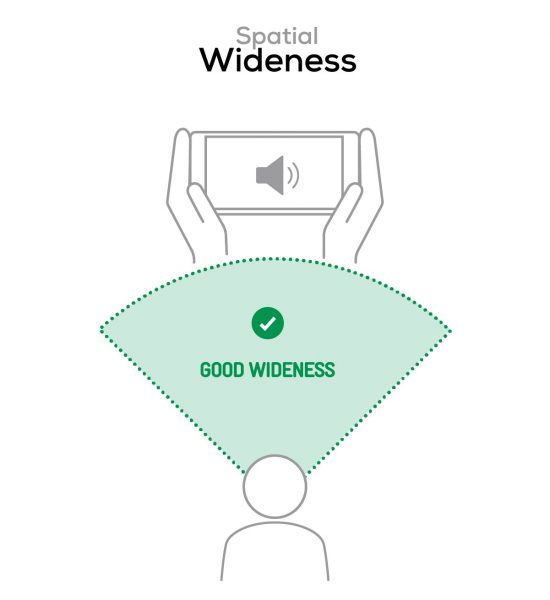
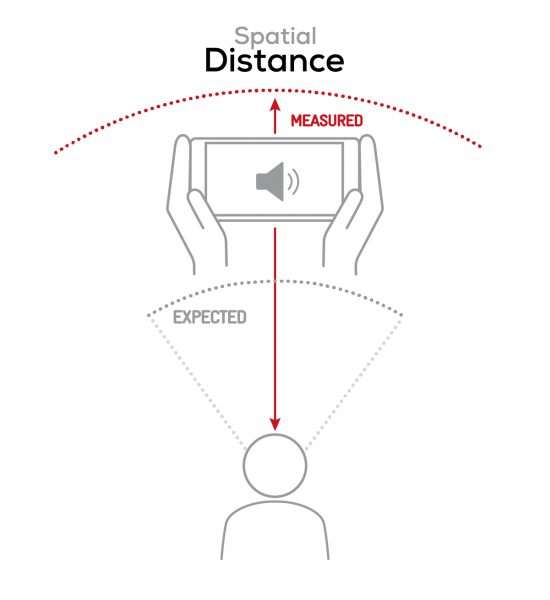
Playback allows the user to precisely localize elements within the stereo field, especially due to the natural reproduction of midrange frequencies. That all said, sounds can occasionally seem to be further than they should.

Volume
Xiaomi Mi 11 Ultra
69
91
Volume tests measure both the overall loudness a device is able to reproduce and how smoothly volume increases and decreases based on user input.
Maximum volume for playback greatly fulfills its role. On the other hand, minimum volume isn’t ideally tuned: dynamic content, such as classical music or movies, can be barely intelligible. Finally, as shown in the graph above, volume steps are consistently distributed from softest to loudest levels.
| Hip-Hop | Classical | |
| Xiaomi Mi 11 Ultra | 75.3 dBA | 70.4 dBA |
| Xiaomi Mi 11 | 74.7 dBA | 71.3 dBA |
| Xiaomi Mi 10S | 74.7 dBA | 72 dBA |


Artifacts
Xiaomi Mi 11 Ultra
87
113
Artifacts tests measure how much source audio is distorted when played back through a device’s speakers. Distortion can occur both because of sound processing in the device and because of the quality of the speakers.
No sonic artifacts are perceivable at nominal volume, whether spectral, temporal, or noise. On the other hand, at loud volumes, pumping and distortion can become noticeable. It should also be noted that the device’s speakers are easily occluded when handheld in landscape mode — not exactly the optimal design for playing games!

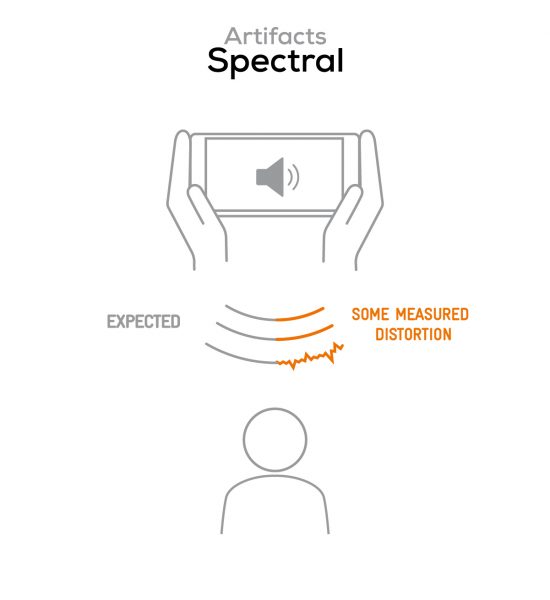
Recording

Timbre
Xiaomi Mi 11 Ultra
86
91
As a recording device, Xiaomi’s latest ultra-premium smartphone excels at capturing timbre, with a remarkable tonal balance overall.
In videos filmed with the rear cameras, treble is precise and midrange is particularly natural, allowing a full-bodied restitution of voices. Selfie videos also benefit from a natural midrange, as well as clear high-ends. However, memos exhibit a minor, albeit not unpleasant, boost in the lower midrange. Finally, in loud environments, the overall tonal balance manages to remain clean and natural, but compared to top-scoring devices, suffers from a slight lack of bass.

Dynamics
Xiaomi Mi 11 Ultra
71
81
Recorded dynamics are also a strong point for the Mi 11 Ultra, with an above-average showing. The device produces a good envelope rendition with particularly sharp vocal plosives, offering impeccable speech intelligibility.
If sound-to-noise ratio is correct in urban surroundings, it fares much better in quieter environments. In loud scenarios, compression slightly impairs transient recordings: if you’re filming a concert, for example, snare hits will probably be affected by this processing.

Spatial
Xiaomi Mi 11 Ultra
67
78
In Recording tests, the Xiaomi Mi 11 Ultra’s spatial attributes score well above average. While localizability and wideness are excellent in videos recorded with the rear cameras and meeting room scenarios, distance capture is very accurate across all use cases. That said, in selfie videos, a narrower sound field impairs both wideness and localizability characteristics of the sound field.
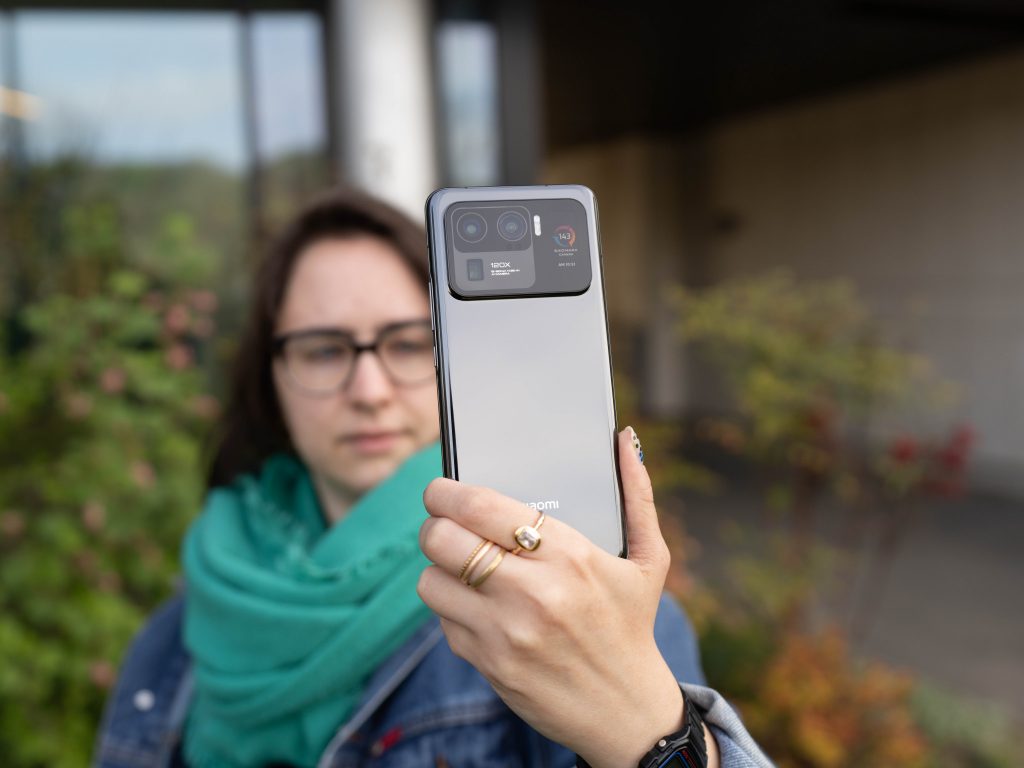

Volume
Xiaomi Mi 11 Ultra
68
99
Maximum loudness recordable without noticeable distortion is very good, which means the Mi 11 Ultra performs really well in loud environments. Although nominal loudness is slightly lower than that of the phone’s fiercest competitors, it is still satisfactory. Here are our test results, measured in LUFS (Loudness Unit Full Scale). As a reference, we expect loudness levels to be above -24 LUFS for recorded content:
| Meeting | Life Video | Selfie Video | Memo | |
| Xiaomi Mi 11 Ultra | -30.9 LUFS | -22.8 LUFS | -21 LUFS | -21.9 LUFS |
| Xiaomi Mi 11 | -29.2 LUFS | -21.5 LUFS | -19.6 LUFS | -20.4 LUFS |
| Xiaomi Mi 10S | -23.6 LUFS | -17.7 LUFS | -16.4 LUFS | -17.4 LUFS |

Artifacts
Xiaomi Mi 11 Ultra
90
97
In this area, the Xiaomi Mi 11 Ultra produces class-leading results, coming in first (along with the Smartphone for Snapdragon Insiders) among all phones we’ve tested to date.
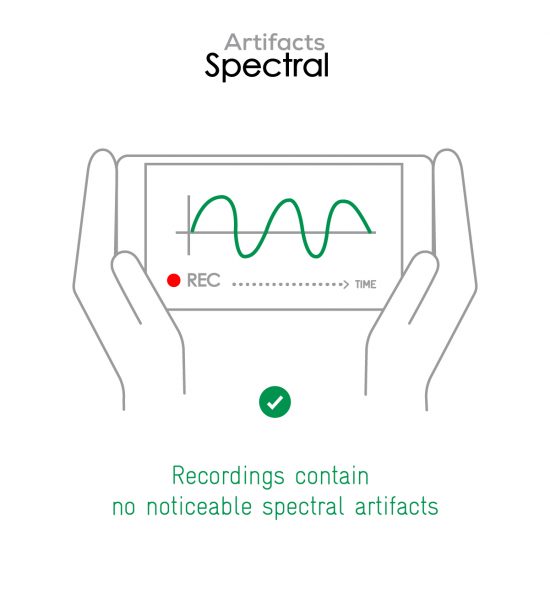
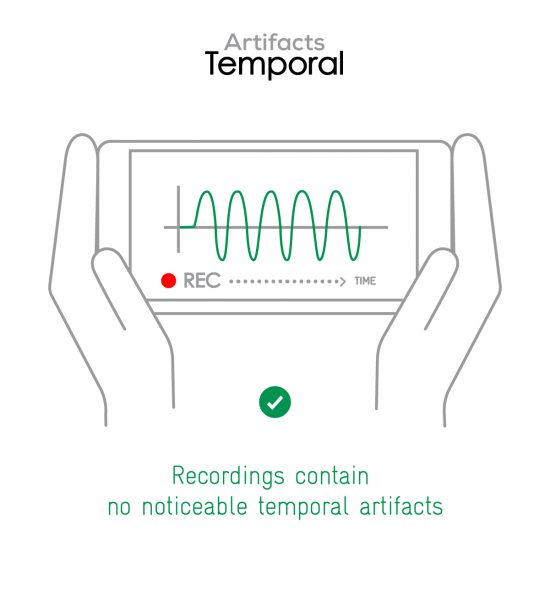
Very few sonic artifacts are noticeable, regardless of the use case. The only minor flaws are a slight clipping generated by shouting voices in selfie videos, and the previously mentioned compression occurring when recording in loud environments.
Here’s a sample recording, illustrating the phone’s ability to keep sonic artifacts to a minimum:

Background
Xiaomi Mi 11 Ultra
56
60
Background recordings fare remarkably well with the Mi 11 Ultra: tonal balance is particularly harmonious, the restitution sounds natural, and no artifacts are noticeable. The phone thus racks up a sub-score of 56, only two points away from the title-holder in this category, the Apple iPhone XS Max
Conclusion
In Playback testing, the Mi 11 Ultra doesn’t particularly outshine its competitors, nor does it fare poorly per se, but its clean tonal balance, good maximum volume and favorable spatial attributes are counterbalanced by undesirable consequences at loud volumes, a slight lack of low-end extension, and an ill-adapted minimum volume. However, as a recording device, it proudly competes with the best-scoring phones we’ve measured so far in every sub-category, even shoulder to shoulder with the excellent Smartphone for Snapdragon Insiders in the Artifacts area. Xiaomi’s latest ultra-premium smartphone makes an excellent on-the-go companion for recording in nearly any type of situation, from meetings to concerts… except for selfie videos!


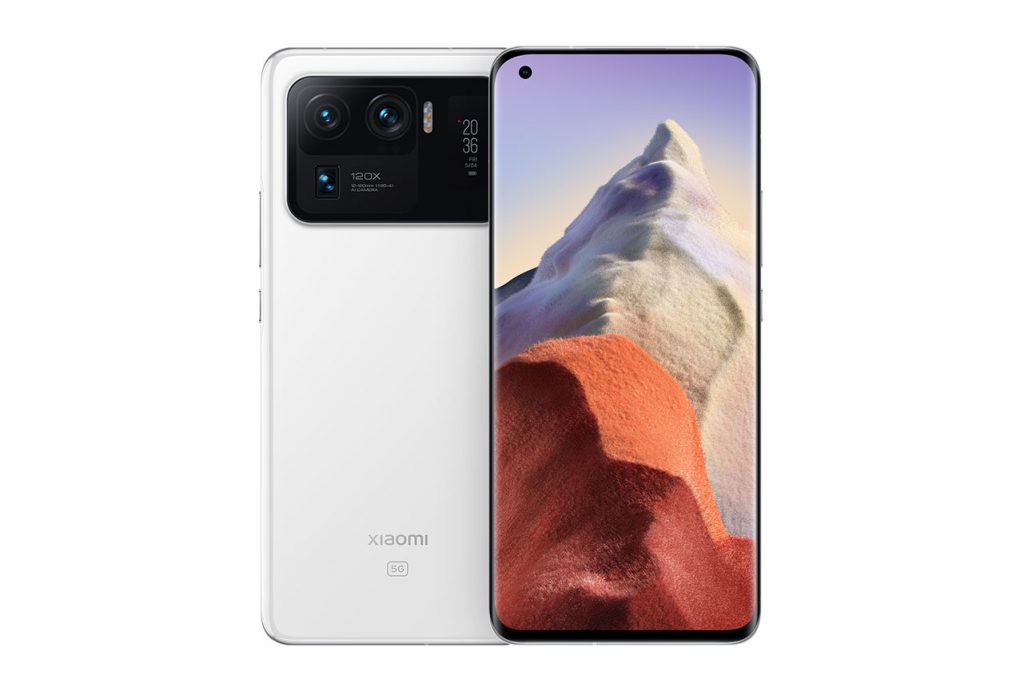
DXOMARK encourages its readers to share comments on the articles. To read or post comments, Disqus cookies are required. Change your Cookies Preferences and read more about our Comment Policy.